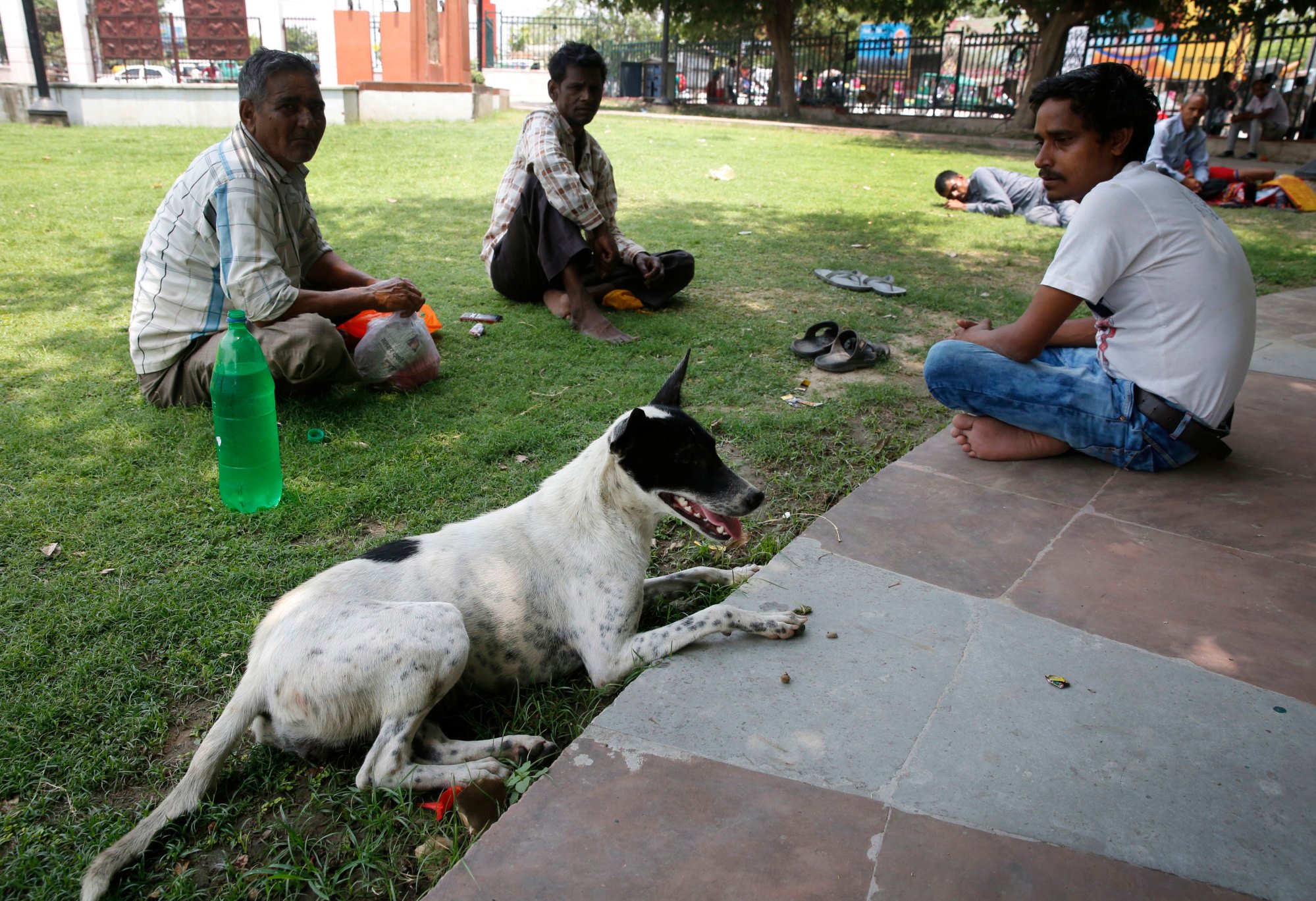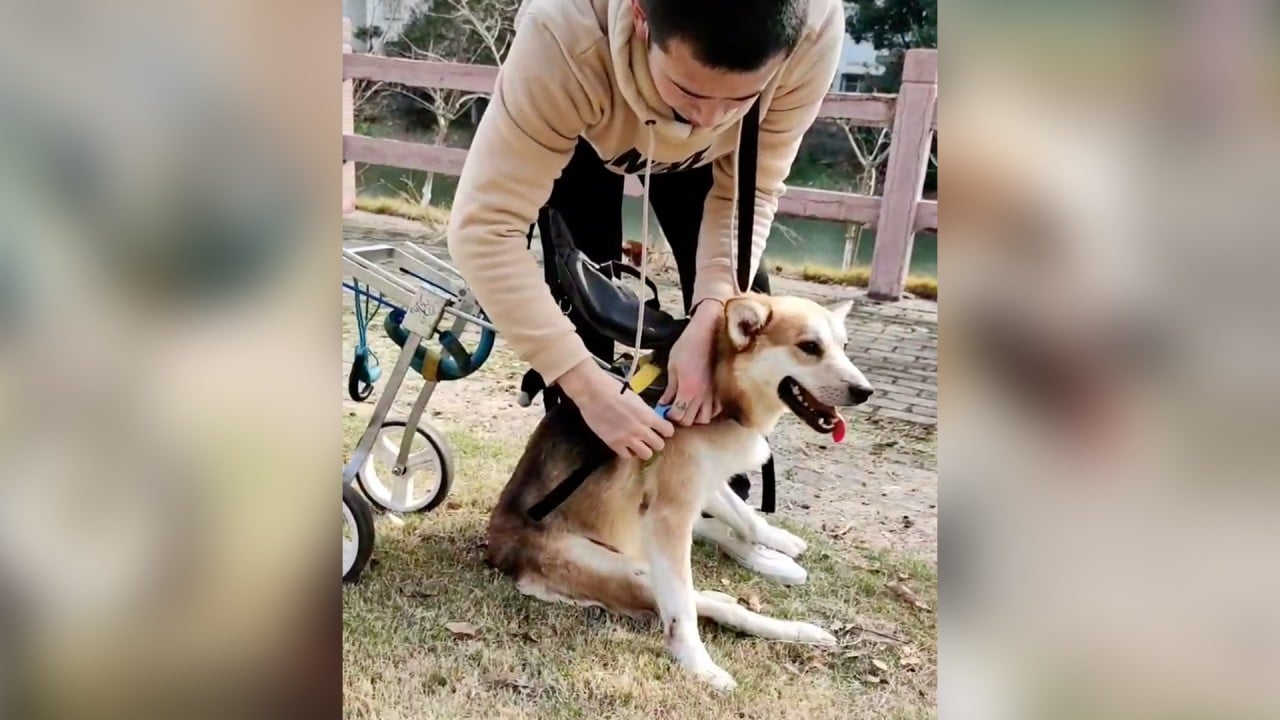The Bruhat Bengaluru Mahanagara Palike (BBMP), the agency in Bengaluru responsible for civic issues, often receives complaints about dogs barking incessantly at night, damaging parked vehicles, and causing traffic disruptions and accidents.
Suralkar Vikas Kishor, BBMP’s special commissioner for health and animal husbandry, said microchipping will help identify stray dogs accurately and keep their numbers in check.
“The microchip technology is a globally proven method for stray and pet animal identification,” Kishor said.
“The most important advantage of using them in stray dogs is it enables us to maintain the case history via location, sterilisation, and vaccination status.”
Given the demand of activists regarding the vaccination of stray dogs, microchipping becomes even more important to avoid issues such as repeated vaccinations or many dogs going unvaccinated, Kishor added.
South Korea faces calls to save dogs, pay breeders as it winds down meat trade
South Korea faces calls to save dogs, pay breeders as it winds down meat trade
Several animal welfare activists are concerned about the health of stray dogs once they are implanted with microchips and the likelihood of botched procedures.
Activist Nevina Kamath pointed out that microchips are only permitted for pet dogs and breeder animals, cautioning that implanting them on strays in uncontrolled environments could lead to health issues.
“Because it’s a foreign body, once it is put into the dogs’ skin, the body could develop a defence mechanism. It could be tissue growth or tumour. All these could cause severe issues to the animals,” she said.
“Implanting microchips cannot be done on the streets, only in a clinical and sterile environment,” Kamath added.
Parvez Ahmed Peeran, a former senior official at BBMP, has dismissed the project as a “criminal waste” of taxpayers’ money.
“BBMP should spend the money on infrastructure rather than a wasteful project like this. This is not going to serve any purpose,” said Peeran, who is now an animal welfare campaigner.
Peeran rejected a similar idea to implant microchips in street dogs when he was the joint commissioner of BBMP’s animal husbandry department a decade ago.
“They cannot examine every stray dog’s health before implanting the microchips. They are inviting problems,” Peeran said.
Rape of Spanish tourist sparks debate on prevalence of sexual violence in India
Rape of Spanish tourist sparks debate on prevalence of sexual violence in India
Allegations of malpractices and suspicions of kickbacks linked to the scheme have also surfaced, with some critics claiming that microchip firms are heavily lobbying for the measure.
The head of an animal welfare group, who declined to be named, alleged that local authorities are flouting rules and engaging in malpractice to push ahead with the scheme.
With an estimated stray dog population of more than 270,000, Bengaluru has long been grappling with the consequences of the uncontrolled proliferation of canines.

The city recorded an annual average of 15,000 to 20,000 dog bite incidents, adding to the urgency of finding solutions to control their population.
BBMP has implemented various control measures that have led to a reduction in the stray dog population from 310,000 in 2019 to the current estimate.
The neutering level among these dogs has increased from 51 per cent to 71 per cent since 2019, helping to keep the number of puppies in check.
Bengaluru routinely participates in a vaccination campaign to control animal births and rabies and aspires to become rabies-free by 2030.
Would you swipe right for this dog? In Hong Kong, you can
Would you swipe right for this dog? In Hong Kong, you can
The city’s officials plan to combine the microchip implant drive with the vaccination campaign to ensure a comprehensive approach in managing the stray dog population.
BBMP’s Kishor said the advantages of microchipping the dogs outweigh any potential pitfalls.
“The concern of activists that it is not necessary expenditure is not justified as it prevents duplication of vaccination and ensures better coverage of stray dogs,” Kishor said.
“The other concern that it may cause health issues and injury is unfounded as the microchip is injected like any other medicine.”

Dr Nagesh Reddy, who runs the Jeeva Pet Hospital dedicated to animals, supported the initiative. He assured the size of a microchip is smaller than two grains of rice and compared the procedure to a routine injection.
“This isn’t a surgical procedure. We just need a bigger needle, that’s all,” said Reddy, adding that post-implant complications are rare.
Priya Gupta, a 28-year-old employee with a start-up, recalled an incident when she was riding a scooter on a night last year.
Is chess India’s new cricket? Young talent dominates game amid popularity surge
Is chess India’s new cricket? Young talent dominates game amid popularity surge
Three dogs chased Gupta along an empty street near her house, forcing her to lose her balance and sustain serious injuries.
Gupta said residents in her area fear stray dogs due to their unpredictable and often aggressive behaviour.
Some residents also compounded the problem by feeding stray dogs in undesignated places or on the streets and this has made the animals linger in the area, according to Gupta.
“These dogs are such a threat. We never know when they will be aggressive, and it’s doubly frightening at night,” said Gupta.








